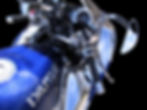top of page

Triple chrome plating on metals, plastics and nonconductive materials
PH (940) 276-0034

Our Plating Process


The general process: What sets apart our process is that we can handle any parts, no matter the shape, size or quantity. Most plating shops are specifically made for specific kinds of jobs (large quantity, or only large parts such as bumpers or rims). We have the expertise to handle extremely custom work. Things that no other plater can do nor what they want to. This is because what we do requires a lot of knowledge and a lot of experience.
How do we prep this part? Do we strip it? Etch it? What material is it made of? Is it magnetic? Does it have anodizing? How about conductivity? Does it need to go through our conductivity process? How can I rack it without any contact points? There is a crack through the middle - how can I fix that? How much copper does this need? How much amperage is appropriate for this size? What polishing rouge is appropriate for this material? The polishing wheel cut through the copper, what do I do? What grit should I use for grinding? Should I grind this part? Which wheel should I use for this part? How can I clean the polishing residue? The part came out with dirt on it, how can I restart. The part came out great, how do I clean it? And so much more...
The questions are endless and this process is different for EVERY JOB. Every single part generates a new path that some times even we have never taken before. That is what a custom plating shop is, and you will not find another one like us. You are recieiving one of a kind, custom work.

Racking (click here to learn more about the racking process): All parts are racked for plating. We use racking to connect parts via copper wire to the rack which sits on conductive bars above the plating tank. The part must be submerged completely into the plating solution. You cannot rack a part improperly or you will risk the part falling into the tank - which can cause a host of problems. Racking a part with contact points such as inserts on automobile parts is simpler than say racking a small pedal car wheel which is just a cylinder with no points to rack from. This is where our decades of experience allows us to rack a variety of different parts with unique shapes.

Heading 1
Copper Plating: To achieve the triple chrome process copper is require as a base before nickel plating. The copper acts as a buffer and protection against internal corrosion and moisture. We send customers photos of the copper layer to ensure that you are aware of the steps we take to protect your part and provide the highest quality work for your parts. Copper needs at least 8-12 hours to form a thick enough layer to allow polishing. Without the correct amount of copper, parts may blister and lead to more issues further down the process. Post copper plating is followed by polishing. Polishing gives the sought after mirror finish. Polishing is achieved from grinder with polishing wheels. Through a combination of different grinding wheels, polishing rouge and technique.


Bright Nickel Plating: Nickel plating provides the same benefits as copper as well as increased physical protective properties. The nickel layer is the final layer before we add the chrome layer. Nickel is necessary as a pre-courser to the chrome. Nickel can be a tricky stage of the plating process as it is the most sensitive to dirty and imperfections. A part going into the nickel bath must be as close to perfect as possible as once it is nickel plated you must go straight into the chrome tank while the surface is "activated".
Chrome Plating (Click here to learn more about the chrome plating process: Our most popular finish: Chrome. Chrome has decorative and utility purposes. Chrome has a bright, white shine to it that is extremely distinctive and leaves a lasting impression for any project, part or car!


bottom of page